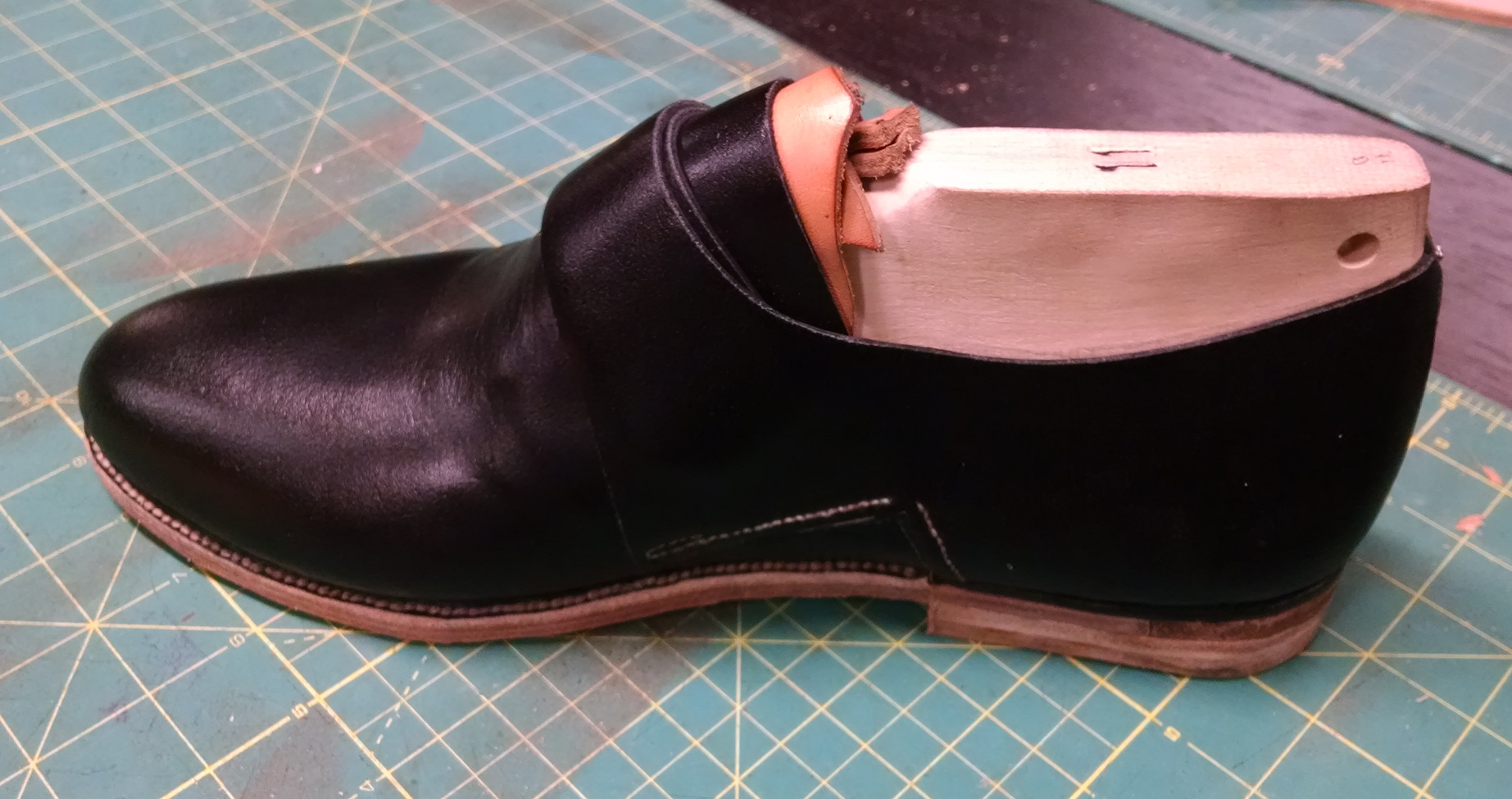A new pair of 18th century shoes for John E., done at stitch pitches of 12spi. This is some of the more fine work that I’ve finished, but by no means would it have been considered fine for the day – in fact, it would have been expected for properly constructed shoes from a master’s workshop. In any event, you may already have read the earlier post on a more correct pair of 18th century men’s shoes, and this followed the procedure similarly, aside from the stitch pitch. Some corrections were also made, which I noted there. I did not attach the tongue as a second piece, but rather continued it as part of the vamp instead. As far as I can tell, it really did not make much of a difference.
As mentioned, I ended up making much finer closing threads. I used five strands of 60/1 which is incredibly fine stuff, about the same thickness as two strands of my normal 16/1 or one 10/1. Clearly, more threads plied together make a stronger thread, hence my decision to go with the five strands.
You’ll notice the small gap in the corner, consistent with the construction of extant pieces that I examined, as I described in the previous 18th century blog post. I’ve closed both uppers by this point.
Once lasted, we inseam, and in case you’ve ever wondered what my workspace actually looks like, you can enjoy this in-action shot. The glass of Kina vermouth is not shown here, but you can see how Kirk and Spock sometimes keep me company in the basement making shoes. =)
The welted shoes, and the welt and sole trimmed. I’ve also attached the heels already.
One thing that I tried newly in this pair was to use a steel heel slicker. The action of polishing it up made it nice and warm when I made the first shoe, but for the second, I just put it in the flame of my gas stove and let it warm up. Certainly, it did seem as if it massaged the leather together better than with just burnishing, but I don’t believe that these iron tools really came about until the 19th century and industrialization.
I also applied a thin layer of paste to the dyed heel and cut sole edge. I noticed that when I walk, sometimes I’ll catch the sole on the inside of my ankle, leaving a black streak on my white stockings. The paste helps to mitigate this effect somewhat. I’m delighted with this pair, and the fact that they fit, and may even go with finer pitch sewing the next time.






